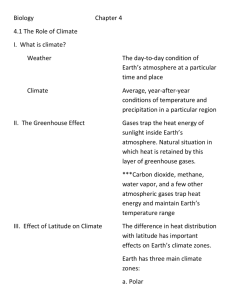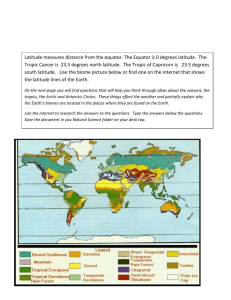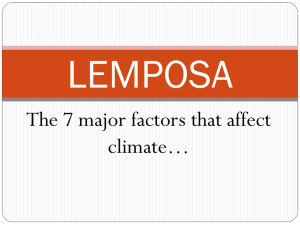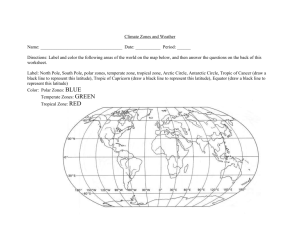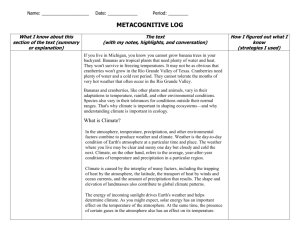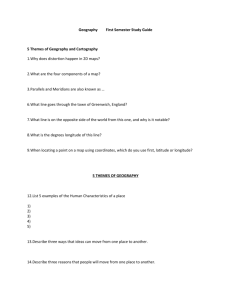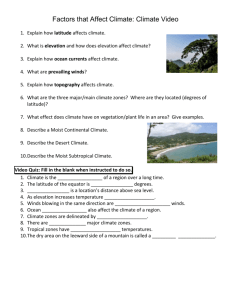Climate Determines Global Patterns in the Biosphere
advertisement
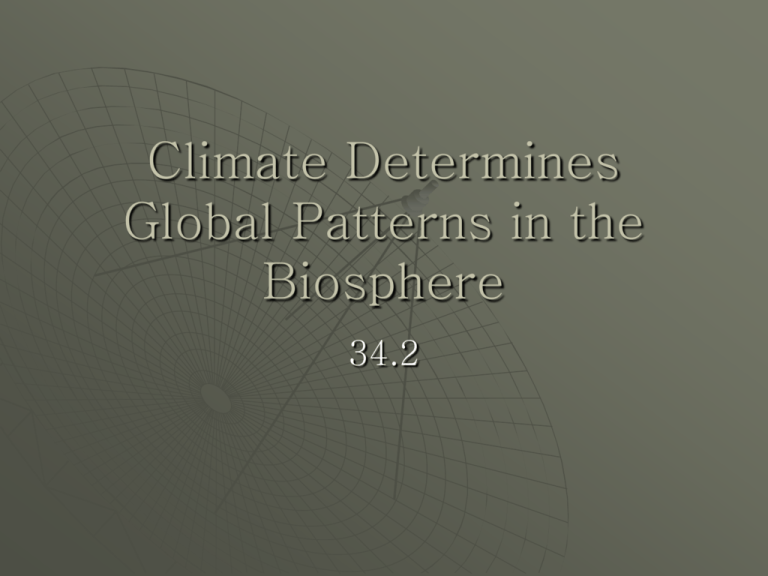
Climate Determines Global Patterns in the Biosphere 34.2 Uneven Heating of Earth’s Surface Energy from the sun warms Earth's surface. But because of Earth's spherical shape, different locations on Earth's surface receive different amounts of solar energy. Near the equator, the sun's rays strike the surface most directly. Earth's surface can be divided into different temperature zones based on lines of latitude. The region that lies between 23.5° N latitude (the Tropic of Cancer) and 23.5° S latitude (the Tropic of Capricorn), called the tropics, is the warmest temperature zone. The region north of the Arctic Circle (66.5° N) and the region south of the Antarctic Circle (66.5° S), called the polar zones, receive the least amount of direct sunlight yearround. The polar zones are the coldest temperature zones. The latitudes in between the tropics and the polar zones in each hemisphere are called the temperate zones. Most of the United States is located within the northern temperate zone. Wind, Precipitation, and Ocean Currents The uneven heating of Earth's surface by the sun is also a driving force behind global patterns of winds and precipitation (rain, snow, and sleet). When air is warmed it can absorb more moisture, and it also tends to rise. Thus air near the equator, heated by the direct rays of the sun, absorbs moisture and rises. Higher in the atmosphere the air cools again, forming clouds that produce rainfall. This pattern means that many areas of Earth close to the equator tend to have warm temperatures and heavy rainfall year-round. After losing moisture over the equator, air masses spread away from the tropics. The dry air descends again and warms at latitudes of about 30° N and 30° S. Some of the world's largest deserts are found in these regions. The rising and falling of air masses, combined with Earth's rotation, produce predictable wind patterns. These wind patterns combine with the uneven heating of Earth's surface, the rotation of the Earth, and the shapes of the continents, producing surface currents. A current is a river-like flow pattern within a body of water. Surface currents can greatly affect regional climates. For instance, the Gulf Stream carries warm water northward from the tropics. This makes the climate in western Europe warmer than other areas at similar latitudes. Local Climate On an August day, people in Los Angeles' San Fernando Valley might face temperatures of 38°C (100°F), while just 30 kilometers away, people at the beach are enjoying the comfortable 24°C (75°F) outdoor air. Local climate variations may be influenced by nearby large water bodies. Oceans and large lakes affect climate because water tends to absorb and release heat more gradually than most other substances Mountains also affect local climate. First, air temperature declines by about 6°C with every 1000-meter increase in elevation. This is why it becomes cooler as you hike up a mountain. Second, mountains near a coast can block the flow of cool, moist air from the ocean, causing different climates on opposite sides of the mountain range. Microclimate Organisms living in the same climate region may be exposed to different conditions created by shade, snow cover, or windbreaks. Such small-scale differences in climate result in a microclimate, the climate in a specific area that varies from the surrounding climate region.
